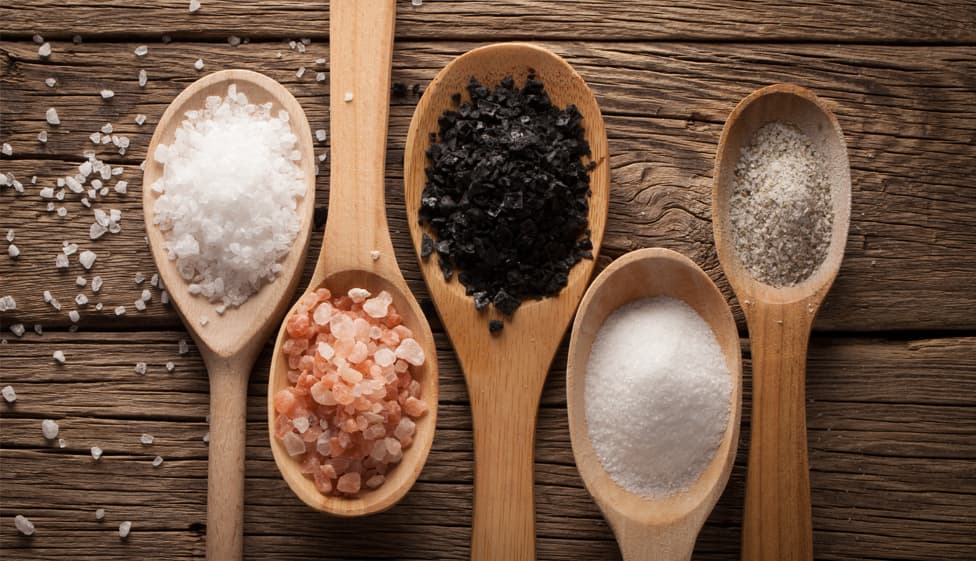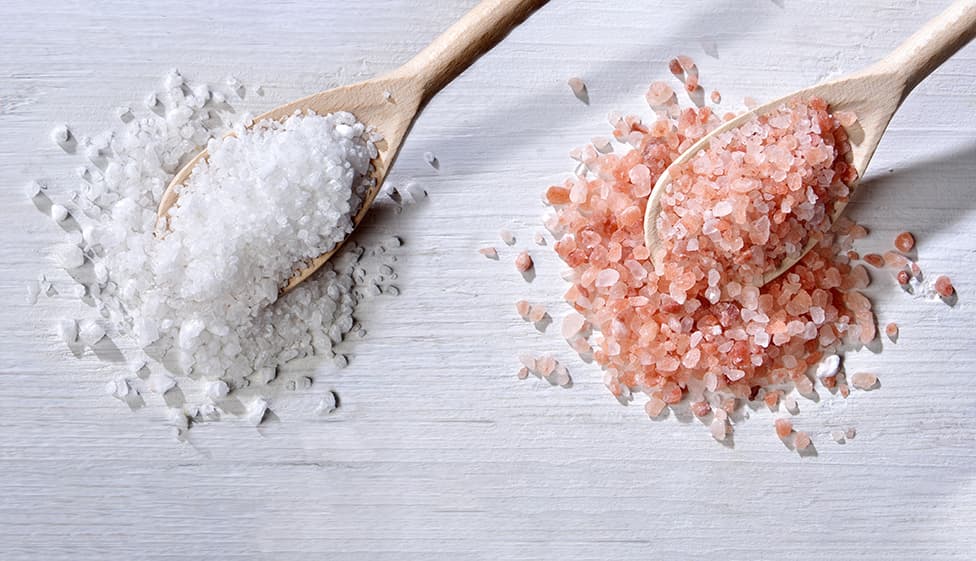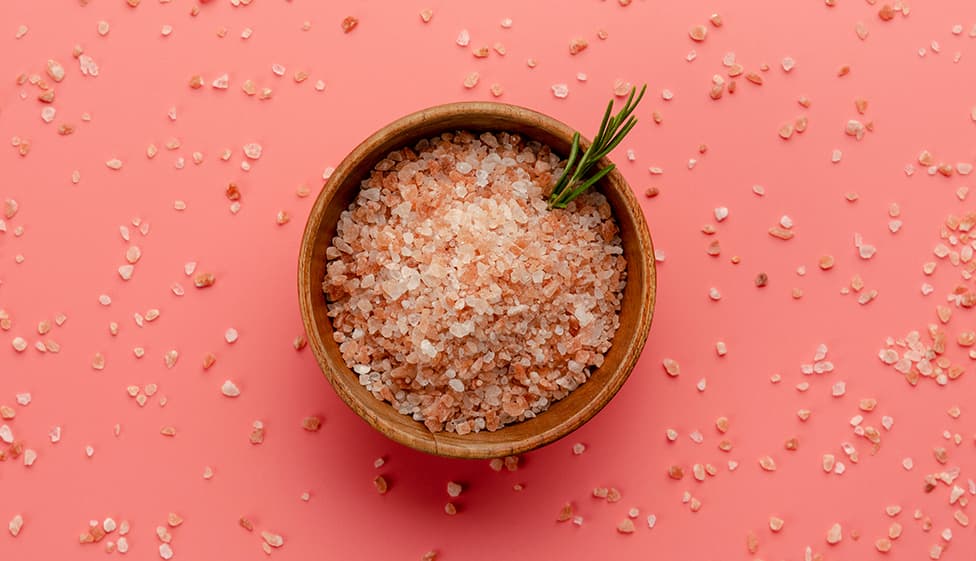Salt is a mineral that people consume in their regular diet for taste and health benefits. Salt is prepared with sodium chloride (NaCl). It helps body muscles and nerves to work smoothly. It also helps to maintain a balance of bodily fluids.
Human beings all around the world have been fond of salt since ancient times. Historians have traced its cultivation and trade to ancient civilizations. It is essential in food consumption. Americans consumed 54 million metric tons of salt last year according to Statista research.
Let’s discuss the five types of salt and their usage:
- Sea salt
- Rock salt
- Table salt
- Canning salt
- Nitrate salt
Sea Salt
Evaporation is a natural process through which the particles of liquid turn into gas. When the seawater evaporates the salt minerals are formed. According to the water research non-profit organization Water Education Foundation, seawater has about 35,000 ppm (parts per million) of salt.
Sea salt is a naturally produced unrefined salt. It contains minerals such as potassium, calcium, and magnesium.
This evaporation of salt naturally forms salt pans, usually in deserts. People can extract food from salt pans or artificially built salt evaporation ponds. These ponds are built near seas to extract salt from seawater or brines.
Types
Some of the popular variants of sea salt are:
- Alaea salt
- Bamboo salt
- Celtic gray salt
- Fleur de sel
- Koreans bring salt
- Moshi salt
- River reed salt
Uses
Sea salt is an unrefined salt that is produced naturally. You can use sea salts to:
- Balance your body fluids
- Clean water for bathing
- Enjoy a diet with a natural and better taste and nutrition
- Grill seafood
- Improve cardiovascular activity
- Improve digestion
- Maintain hydration of the body
- Nourish skin
- Prepare barbecue
- Prevent bacteria
- Prevent dental cavities
- Regulate your blood pressure
Rock Salt
Rock salt is a natural type of salt. When the seawater evaporates and dries up, the salt forms within the sedimentary rocks. It usually produces halite. It can have different colors or no color at all.
There are two methods of extracting the natural rock salt:
- Mining
- Heating
Mining rock salt
Miners extract salt from the rocks by:
- Injecting fresh water through pipes into deep shafts and dry brines
- Drilling holes in salt walls and blasting them
- Crushing salt to pieces and lifting it on a conveyor belt
Heating rock salt
Also known as the Alberger process, it involves the heating of brines at high pressure with heaters. The laborer uses salt in a grainer pan after the pressure is released which forms salt crystals.
Types
Popular types of rock salt are:
- Frost salt
- Himalayan black salt
- Himalayan pink salt
- Persian blue salt
- Potassium salt
Uses
You can use rock salt to:
- Boost potassium levels in your blood
- Clean stains on the:
- Cooking utensils
- Kitchen or office floors
- Cure acidity
- Design decorative salt lamps
- Improve immunity
- Perform massage treatment
- Reduce weight
- Treat sore throat
Table Salt
Table salt is also known as edible salt. The salt refinery plants refine salt by removing the minerals such as magnesium and calcium with chemicals. Salt manufacturers add anti-caking agents to ease the flow of salt smoothly. They use titanium dioxide to color it white.
Most manufacturers add iodine to salt as iodine removes deficiency and ensures the proper function of thyroid glands. 88.7 percent of worldwide households consumed iodized salt in 2021 according to Statista research. According to the health information website Healthline, 90 percent of the American population is now iodine efficient thanks to the usage of iodized salt.
Types
Table salt is the most commonly used salt which is available at your retail shops or supermarkets. There are many variants of the table salt including:
- Butter salt
- Celery salt
- Dairy salt
- Garlic salt
- Kitchen salt
- Onion salt
Uses
You can use table salt for multiple cleaning, eating, and preparing food purposes such as:
- Adding flavor to foods
- Creating baking soda to prepare bakery items
- Increasing the shelf life of a food item
- Removing rust from utensils
- Preparing dairy products such as:
- Butter
- Cheese
- Preparing fast foods such as:
- French Fries
- Hot Dogs
- Pasta
- Preventing various viruses and infections such as bacteria and fungi
- Processing meat and vegetables
Canning Salt
Canning salt is a pure and natural salt prepared from sodium chloride and fine grains. Unlike table salt, it does not require the usage of additives, anti-caking agents, iodine, or any other chemicals.
The uses of a canning salt are:
- Canning brine
- Preparing pickles
- Preserving vegetables
Nitrate Salt
Nitrate salt is also known as saltpeter. It is a chemical compound naturally formed by the combination of alkali metal and nitrate ion. This mineral is a natural source to obtain nitrogen.
Types
- Potassium nitrate
- Sodium nitrate
Uses
You can use nitrate salts for:
- Fertilizing plants
- Manufacturing strong glasses
- Preparing medicine
- Preparing toothpaste to clean teeth
- Preserving meat
- Producing nitric acid
- Producing solar thermal energy
- Removing air bubbles from ceramics
- Thickening soups
Conclusion
We have just understood that different types of salts can be used for different purposes. With this comprehensive detail of these types and their utility, now you have to decide which type of salt suits you best.




